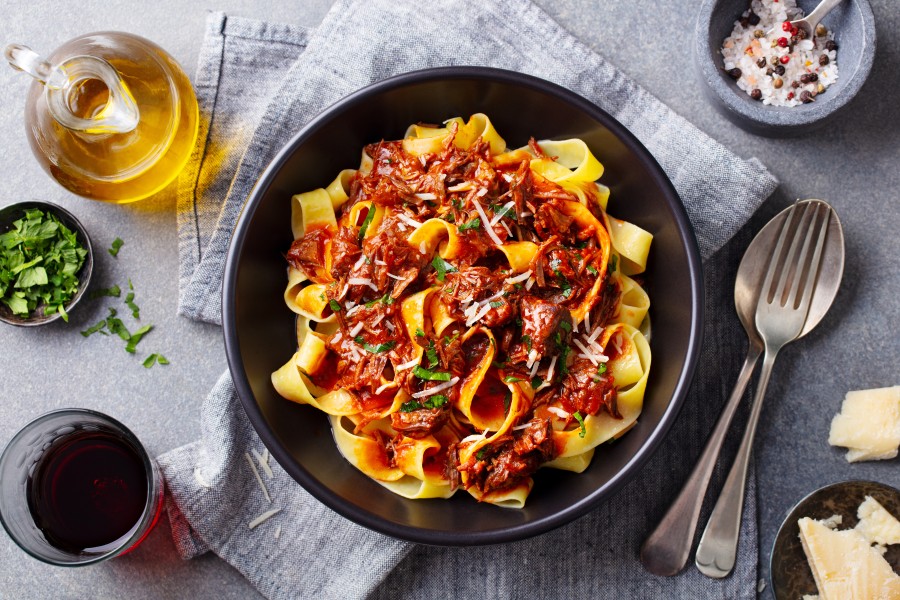Balanced eating guide: eating well with diabetes

Eating a balanced diet with plenty of different food groups, vitamins and minerals is important for everyone, and is also an integral part of maintaining your target blood glucose levels if you have diabetes.
Diet and poor nutrition are important risk factors for developing type 2 diabetes too [1, 2].
This article will cover the basics of balanced eating when you have diabetes, what foods can make up a varied diet, and what foods to be a little more aware of.
Eating with diabetes
This article was written using research that mostly focuses on type 1 and 2 diabetes. For all people with diabetes, it is important to discuss any planned changes to your diet with your diabetes team or ensure you have done some research to help you understand more about your choices.
No two people living with diabetes are the same, so there isn’t a one-size-fits-all meal plan or diet for everyone. You will have your own blood glucose targets to try and stay within, and these can vary depending on your age, health and other factors [3]. Keeping your blood glucose in range over the long term helps delay or prevent complications such as heart disease, vision problems, or kidney disease [1, 3].
To stay within your target blood glucose range, you might think that you have to stop eating certain food, but this isn’t necessary, you can still eat what you want and enjoy, it’s just about balance and moderation [4].
The benefits of eating well for diabetes
Eating a varied, balanced diet, especially when combined with exercising where possible, has many benefits [4].
Some of these benefits include [4]:
- Helping to keep your blood glucose in your target range
- Helping to manage your blood pressure
- Helping to keep your cholesterol in check
- Maintaining a certain weight
- Preventing or delaying diabetes problems
- Feeling good and having more energy
What does a nutritious balanced diet look like?

The key to balanced eating is to make sure that your meals include a variety of foods from all the food groups [4]. These are [4]:
- Starchy vegetables, such as potatoes, peas, parsnips and squash
- Non-starchy vegetables, like carrots, leafy greens, cauliflower, broccoli
- Fruits, including oranges, apples and berries
- Grains (at least 50% whole grains) found in bread, pasta, cereal, rice and quinoa
- Protein, such as lean meat, eggs, fish, tofu and nuts
- Dairy, including milk, yogurt and cheese
You might find that making changes to your diet seems challenging at first, but starting with small changes and getting support from your family, friends, and healthcare team can help [4].
Tips for eating well with diabetes
Over time you will discover the foods that you enjoy and how to fit your diabetes management around your meals and your lifestyle.
There are a few things that you can do to try to follow a varied diet and help manage your blood glucose [3, 4]. These include:
- Trying to eat at regular times [3]
- Be aware of foods that are high in saturated and trans fats, sugar or salt [3]
- Stay hydrated with water as much as possible [3]
- Consider fruit as a sweet snack instead of chocolate or sweets [3]
- Be mindful of your food portions [3]
- Consider a sugar substitute to put in your tea or coffee [4]
- Plan your meals if it suits your lifestyle [4]
If you need help coming up with meal plans that are enjoyable too, there’s plenty of resources online for inspiration or you can chat to your healthcare team for some tips. You could also reach out to the diabetes community, Diabetes UK or JDRF for advice too.
Foods to be aware of
There are some foods that are worth being aware of and understanding the contents of them and how they might affect your health and BG levels. [4].
You may already be aware that when planning your meals you need to consider the amount of carbs that they contain [3]. This is because carbs make your blood glucose levels go higher after you eat them [3].
Foods to keep an eye on [4]:
- Fried food and other foods high in saturated fat and trans fat
- Foods high in salt/sodium
- Sweets, cakes, biscuits, chocolate bars and ice cream
- Drinks with added sugar (such as juice, fizzy drinks and energy drinks)
- Alcohol
As with most things, it’s important to enjoy food and drink in moderation and make sure you look after yourself as best you can [4].
Eating out with diabetes

Eating out at a restaurant might seem daunting and too difficult but with a little planning, you can enjoy a meal out and hopefully make the experience a little easier when living with and managing diabetes.
Some general tips to help when eating out include [6]:
- See if you can take a look at the menu before you go and decide what you are going to eat or might like the look of
- If you are eating late, have a small snack before to avoid getting hungry — choose a snack that contains fiber and protein, such as a small handful of nuts
- Make sure you stay hydrated and have water with your meal
- Consider different cooking methods, such as baking, steaming or grilling, rather than frying
- Consider vegetables instead of fries or potatoes
- Be aware of extra sauces, dressings and marinades.
It may seem like diabetes could stop you enjoying your meals or eating the foods you love, but this doesn’t have to be the case [4].
Together with your healthcare team, you will be able to come up with meal plans that work for you [4].
Sources
- Davison, K.A.K., Negrato, C.A., Cobas, R. et al. Relationship between adherence to diet, glycemic control and cardiovascular risk factors in patients with type 1 diabetes: a nationwide survey in Brazil. Nutr J 13, 19 (2014). https://doi.org/10.1186/1475-2891-13-19
- International Diabetes Federation (2017). IDF diabetes atlas (8th Ed)
- Centers for Disease Control and Prevention (CDC). Manage Blood Sugar. Accessed August 2022. Available at: https://www.cdc.gov/diabetes/managing/manage-blood-sugar.html
- National Institute of Diabetes and Digestive and Kidney Diseases. Diabetes diet, eating, and physical activity. Accessed August 2022. Available at: https://www.niddk.nih.gov/health-information/diabetes/overview/diet-eating-physical-activity
- Evert AB, et al. Nutrition therapy for adults with diabetes or prediabetes: a consensus report. Diabetes care. 2019;42:731-754
- Centers for Disease Control and Prevention (CDC). Eating out. Accessed August 2022. Available at: https://www.cdc.gov/diabetes/managing/eat-well/eating-out.html




